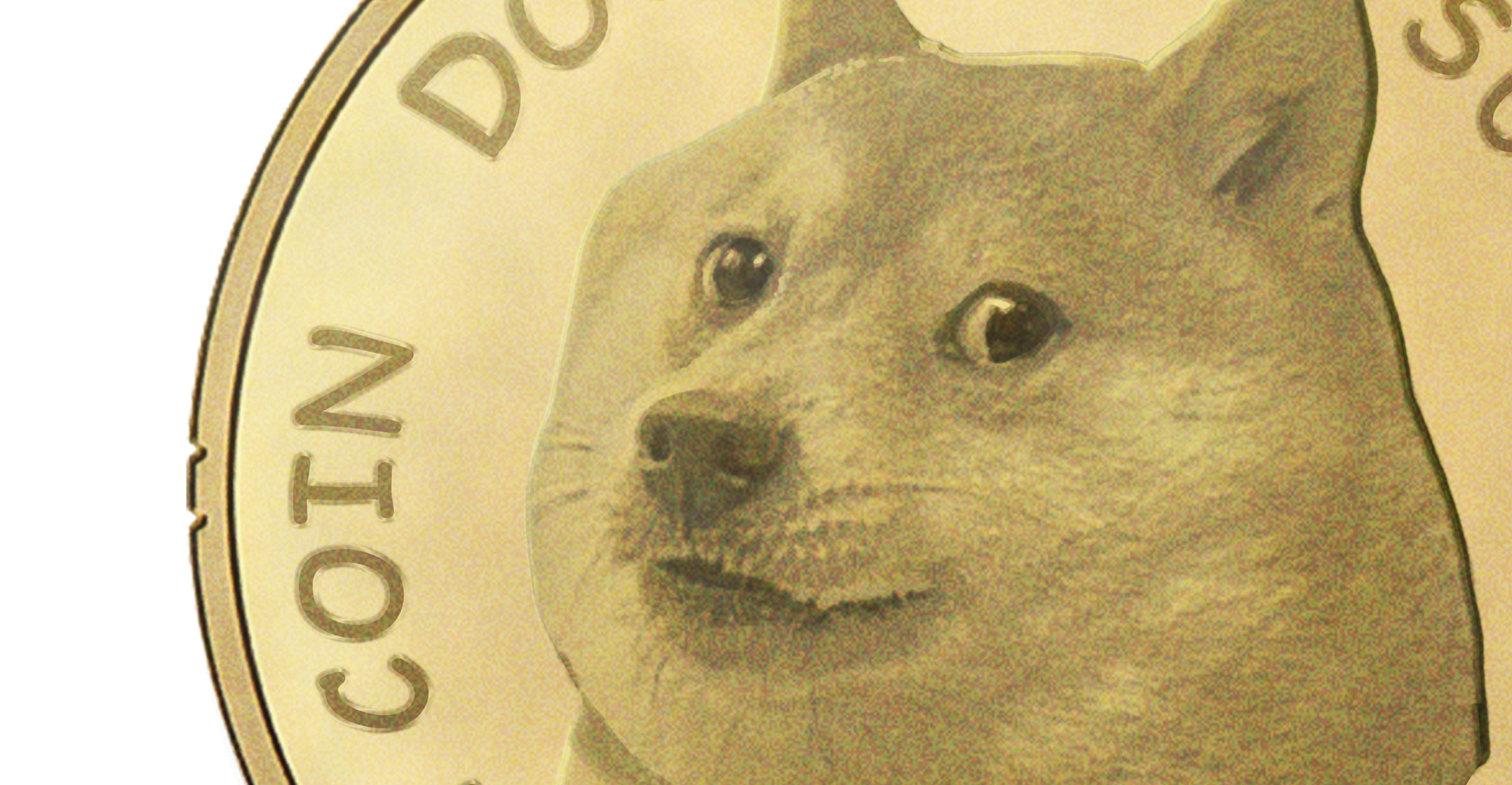 Dogecoin may not be the funniest joke of all time, but it’s probably the one with the largest market valuation. The digital token, previously famous as the first “memecoin”, approached US$90-billion in early April as retail traders embraced high-risk (and meme-friendly) opportunities fuelled by the pandemic era’s exceptional economic stimulus. A year before, it had been worth $315-million, a figure that many at the time thought laughably high. No joke!
Dogecoin may not be the funniest joke of all time, but it’s probably the one with the largest market valuation. The digital token, previously famous as the first “memecoin”, approached US$90-billion in early April as retail traders embraced high-risk (and meme-friendly) opportunities fuelled by the pandemic era’s exceptional economic stimulus. A year before, it had been worth $315-million, a figure that many at the time thought laughably high. No joke!
1. What is dogecoin?
“Dogecoin is an open-source, peer-to-peer digital currency, favoured by Shiba Inus worldwide,” according to dogecoin.com, which also proclaims that 1 dogecoin = 1 dogecoin. So let’s just say the folks working on it aren’t afraid to have a bit of fun. What is it really? A digital token created in 2013 by software engineers Billy Markus and Jackson Palmer with a picture of a Shiba Inu, a breed of dog that had become popular in Internet memes.
2. What was the joke?
It’s pretty much just a cryptocurrency created with the Doge meme, which was popular at the time it was put together in 2013, just as bitcoin was attracting attention from the wider world. The meme used a 2010 photograph of a Shiba Inu, and was often posted with thoughts expressed in a type of broken English. “I’m half detached, but it’s weird that something I made in a few hours is now part of Internet culture,” Markus said in a February interview.
3. Why did it go up so much?
As interest in cryptocurrency and trading in general spiked this year, dogecoin was there waiting to be found by retail investors. Sam Bankman-Fried, founder and CEO of the cryptocurrency derivatives exchange FTX, says that after brokerage app Robinhood restricted trading in GameStop stock at the height of a meme-driven stock-trading frenzy, “hundreds of millions of dollars moved seamlessly” into dogecoin. The coin got a big boost on 20 April, aka 4/20, a day traditionally associated with pot. Dogecoin users decided to celebrate #DogeDay and boost the price to 42c, or 69c — another, uh, joke number — or even $1. They succeeded, sort of, with the price soaring to a record 41.9c that day, according to CoinGecko.com. It later slipped over 25% from that peak.
4. Who’s been pushing it?
Dogecoin has drawn celebrity billionaire fans, most notably Elon Musk, the co-founder of Tesla, and Dallas Mavericks owner Mark Cuban. Musk has tweeted everything from a discussion of setting up dogecoin mining rigs with his children, to an image of a $1 bill with the Shiba Inu on it, to simply, “doge”. On the other hand, Musk drove the price down sharply in May, when he appeared on Saturday Night Live and jokingly called dogecoin a “hustle”.
 5. What else drove it up?
5. What else drove it up?
As bitcoin goes, so go other cryptocurrencies, and its surge was clearly a factor in dogecoin’s rise in April. And when the price of a bitcoin was over $60 000, being able to pay 40c for a dogecoin gained in appeal, however much of a run-up that represented itself. There’s also the idea that the longer something has been around in the brave new world of cryptocurrencies, the more credibility it has. Since dogecoin was founded in 2013, it’s practically an elder statesman in the crypto world.
6. Is it actually good for anything?
You can buy Dallas Mavericks merchandise, thanks to team owner Mark Cuban (also someone who’s been known to tout doge). A lunar satellite launch involving SpaceX (another one of Musk’s companies) was paid for in dogecoin as well. There are a few places that will take it, though it isn’t exactly accepted widely at this point. And maybe some people just think it’s fun to be along for the ride.
7. What are the risks?
Investors — particularly newbies who don’t necessarily know a lot about crypto — could get burned. Also, some of the technical aspects might not be as robust as with the top cryptocurrencies. Funding to enhance the quality and security of its software just hasn’t been there. It’s catching up now as the renewed interest attracts more developers, but the process won’t happen overnight. Konstantin Richter, CEO and founder at Blockdaemon, a blockchain infrastructure provider, said earlier this month that there are questions around dogecoin’s software development and road map, but that it’ll catch up. If dogecoin is very valuable and people can make money building applications on it, they will, he said.
8. Who’s making and losing money?
Dogecoin has gone for a pretty wild ride — but anyone who’s had it for more than a few months has made money. After all, it started the year at about half of one cent! Still, there are probably also a lot of people who bought in at the highs (it reached about 73c on 8 May) and might be underwater now. — Reported by Joanna Ossinger, (c) 2021 Bloomberg LP




